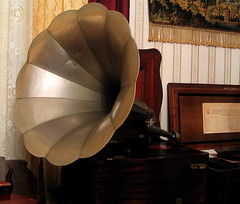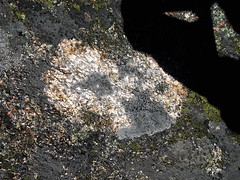Change
The change of seasons, moving back the clock—create a backdrop for contemplating time. Time as daily, monthly, yearly and extending beyond to eras and eons. And such contemplation triggers thoughts of change, sometimes imperceptible, but other times a giant with big league boots traversing the landscape. And that catapults me into both world history and personal history.
Could my grandmother envision an IPod as she watched Grandpa Amos on the ‘The Real McCoys ? Did Hegel envision the Soviet regime of Stalin? My mother once left the peas and carrots in the pressure cooker too long. Our kitchen ceiling, spattered with orange and green, foretold the advent of chance as the spur for creative pursuits. Once upon a time, in Greenwich Village, I heard Lenny Bruce. He stood on the proverbial street corner and spouted a tirade against the restrictions imposed on profane language. Right there he began a litany of words—each word descended upon the small crowd. He said, “These are only words.” Now, can you imagine even looking up when Lenny’s words are sprayed about like confetti?
When I visited the Music House in Maine I took this photo and that set me off remembering my first record player. It was a modern triumph over these early 1920s Victor Phonographs. My parents gave me a record player for my thirteenth birthday and money to purchase three records. I bought 'Pictures at an Exhibition' by Modest Mussorgsky because I had read some tales of Baba-Yaga, the hideous witch who lived on the edge of a forest, but mainly because my grandparents came from Russia and heard these stories as children. Mussorgsky's musical interpretations fascinated me. I also purchased a recording of Union Songs sung, I think, by Pete Seeger. For weeks I sang There once was a union maid Who never was afraid of goons and ginks and company finks And deputy sheriffs who made the raids ...My third record, a 45rpm, was 'Heartbreak Hotel' by Elvis Presley. My collection grew slowly. At some point I purchased 'Linda'. —my name. Tonight I found the lyrics to the entire song on the internet.
When I go to sleep
I never count sheep
I count all the char-ar-ar-arms
About L-L-L-L, L-L-L-Linda
And since that time record players gave way to turntables, stereos, hi-fi, tweeters, woofers, cd, dvd. IPOD and on and on. But some things remain the same. People dream. The seasons change. History repeats itself as if it is stuck on a turntable.
Could my grandmother envision an IPod as she watched Grandpa Amos on the ‘The Real McCoys ? Did Hegel envision the Soviet regime of Stalin? My mother once left the peas and carrots in the pressure cooker too long. Our kitchen ceiling, spattered with orange and green, foretold the advent of chance as the spur for creative pursuits. Once upon a time, in Greenwich Village, I heard Lenny Bruce. He stood on the proverbial street corner and spouted a tirade against the restrictions imposed on profane language. Right there he began a litany of words—each word descended upon the small crowd. He said, “These are only words.” Now, can you imagine even looking up when Lenny’s words are sprayed about like confetti?
When I visited the Music House in Maine I took this photo and that set me off remembering my first record player. It was a modern triumph over these early 1920s Victor Phonographs. My parents gave me a record player for my thirteenth birthday and money to purchase three records. I bought 'Pictures at an Exhibition' by Modest Mussorgsky because I had read some tales of Baba-Yaga, the hideous witch who lived on the edge of a forest, but mainly because my grandparents came from Russia and heard these stories as children. Mussorgsky's musical interpretations fascinated me. I also purchased a recording of Union Songs sung, I think, by Pete Seeger. For weeks I sang There once was a union maid Who never was afraid of goons and ginks and company finks And deputy sheriffs who made the raids ...My third record, a 45rpm, was 'Heartbreak Hotel' by Elvis Presley. My collection grew slowly. At some point I purchased 'Linda'. —my name. Tonight I found the lyrics to the entire song on the internet.
When I go to sleep
I never count sheep
I count all the char-ar-ar-arms
About L-L-L-L, L-L-L-Linda
And since that time record players gave way to turntables, stereos, hi-fi, tweeters, woofers, cd, dvd. IPOD and on and on. But some things remain the same. People dream. The seasons change. History repeats itself as if it is stuck on a turntable.




